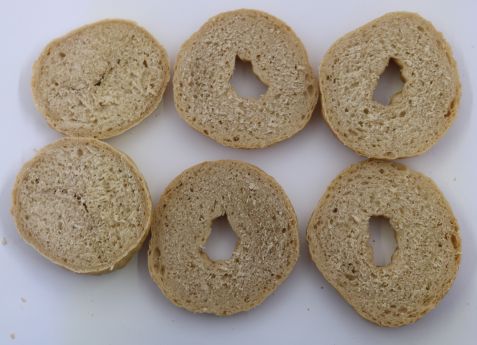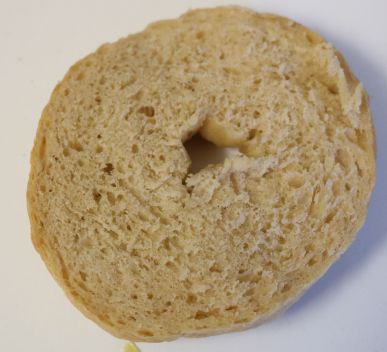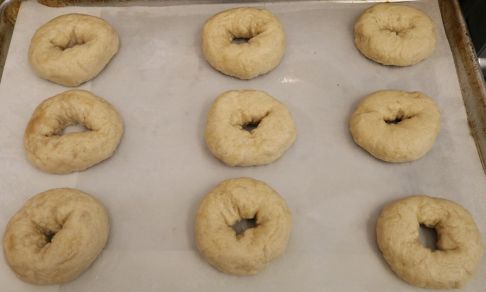Forum Replies Created
-
AuthorPosts
-
Lincoln has a mask order starting today. Update: The governor is looking into whether he can overrule the mayor. This kind of petty fighting isn't going to make COVID19 go away. :sigh:
Stores like WalMart, CVS, Walgreens and Target all are requiring masks for all people in their stores.
And when I make soup or chili, we'll reheat it for several days, or freeze it for meals down the road.
My wife will eat some leftovers but not others, and I've never figured out a pattern to it in 47+ years. She won't eat left over spaghetti, but she will eat the cheese toast I make to go with spaghetti, and she'll eat left over lasagna or pizza. She won't eat left over stir fry, but she will eat left over pot roast. Go figure!
The odd thing is it doesn't always happen when a thread hits a multiple of the block size (currently 15), so it must have something to do with how individual pages are counted, which may have to do with things like editing posts, the dreaded spam filter trap, etc.
I took a look at the code but it is so labyrinthine that I'm hesitant to even touch it.
I found the Stella Parks recipe went moldy faster than most breads. But my go-to whole wheat bread is only 50% whole wheat and has 4 ounces of honey in it (for 2 loaves), and sugar/honey acts as a preservative, so it prolongs shelf life by a couple of days.
But these days, with just the 2 of us, almost any breads I make are cut up and most of it frozen.
I think that was just a shaping issue combined with some rising as they were waiting to go in the water.
The problem with the 'hole in the middle' method is the hole will shrink if the dough contracts. The 'wrap around the hand' method tends to produce a more uniform sized hole, because the dough doesn't contract as much, but it doesn't work with big hands and small (3 ounce) bagels.
I've never really understood yeast flakes. They're deactivated yeast, and are used as a flavoring or nutritional supplement. They're supposed to have a flavor reminiscent of cheese.
Marmite is even weirder, IMHO.
My experience with barley malt syrup is that it gets really thick as water evaporates out. What I do is add some hot water to the jar and let it sit for a few days, that gets it back to a more liquid state.
Here's a shot of all 3 sets of bagels from today:
The 30 second one is on the left, the 3 minute one on the right. There's far less color difference in this photo compared to the two I posted yesterday.
I put them in a micro-perforated bag overnight, this morning they didn't seem either dried out or soggy, and the the chewiness seemed the same as yesterday. Bagels tend to go moldy in regular un-perforated bags after a few days, I'll see how these do, assuming they last that long; we've eaten 4 of 9 so far.
Attachments:
You must be logged in to view attached files.I went with the sweet poaching liquid based in part on the discussion on the BBGA forum a few weeks back.
It'd be a pain to have two pots of boiling water going, but I think for my next batch of bagels I'm going to do some in sweetened water and some in my usual baking soda water. (I sometimes use both baking soda and barley malt syrup.)
I will say these bagels, especially the 3 minute ones, remind me a bit of Montreal Bagels. (Of course, I've only had them once or twice.)
I miss having toppings on them, I usually top mine with cheese and my wife's with poppy seeds. But they were good toasted and topped with cream cheese, corned beef and swiss cheese.
We shared one of the 3 minute bagels and one of the 30 second bagels for supper.
The first picture is the bagel that was boiled for 30 seconds:
The second picture is the bagel that was boiled for 3 minutes:
In my previous post, the bagels on the right were the 30 second ones, the ones in the middle were the 90 second ones and the ones on the left were the 180 second (3 minute) ones.
The 90 second ones and the 3 minute ones puffed up a lot more during boiling, but by the time they were baked the size differences were less obvious. The longer they boiled the softer they feel to the touch, and I think that may have impacted interior texture and color a bit though the distinct difference in color in the above photos could be caused by my camera. I should have taken a shot of them side by side. Maybe next meal. Because I used barley malt syrup, which is dark brown, my bagels always have some color in the interior. The 3 minute one was harder to cut because of the softness and the exterior is less smooth and shiny.
My wife thought the 30 second bagel had a bit more flavor from the poaching liquid but thought the 3 minute one 'tasted more like a bagel'. I thought the 30 second was was better than the 3 minute one in all respects, including chewiness.
Attachments:
You must be logged in to view attached files.I did make a batch of bagels today, using the ABED recipe. 3 of them were boiled for 30 seconds on each side, 3 of them for 1 1/2 minutes on each side and 3 of them for 3 minutes on each side. The poaching liquid had honey in it but no baking soda or salt.
I'm posting pictures below and will discuss texture and flavor after we have some of the bagels for supper.
The first picture is the bagels after shaping but before being boiled.
The second picture is after the bagels have been boiled.
The third picture is after baking.
Can you guess which column of bagels was boiled for 30 seconds, for 90 seconds and for 180 seconds per side?
Attachments:
You must be logged in to view attached files.I've been making a gluten free cornbread for years, we actually like it better than the one on the side of the cornmeal container that uses wheat flour. I will say it doesn't have quite as long a shelf life, but it seldom lasts that long anyway.
What's thr original recipc you started from?
I have used everything from very high protein (> 15%) flour to Gold Medal AP (under 11%) for bagels with no problems.
Personally, I feel boiling bagels longer than 30-40 seconds per side is a mistake. I may have to make a batch of plain bagels with different times in the water to see what happens.
I will disagree with Cass a bit on the science behind boiling bagels, though, I think it is to gelatinize the surface starch, which is part of what produces the shiny surface of a classic bagel. The inner part of the bagel doesn't get hot enough in the boiling water to kill the yeast there, though the yeast towards the surface will die.
There was an interesting discussion in the BBGA forum a couple months back on whether or not an alkali bath is needed for bagels. To say opinions varied would be an understatement! Those that don't use an alkali bath generally use a bath with sugar, honey or malt syrup in it.
-
AuthorPosts





